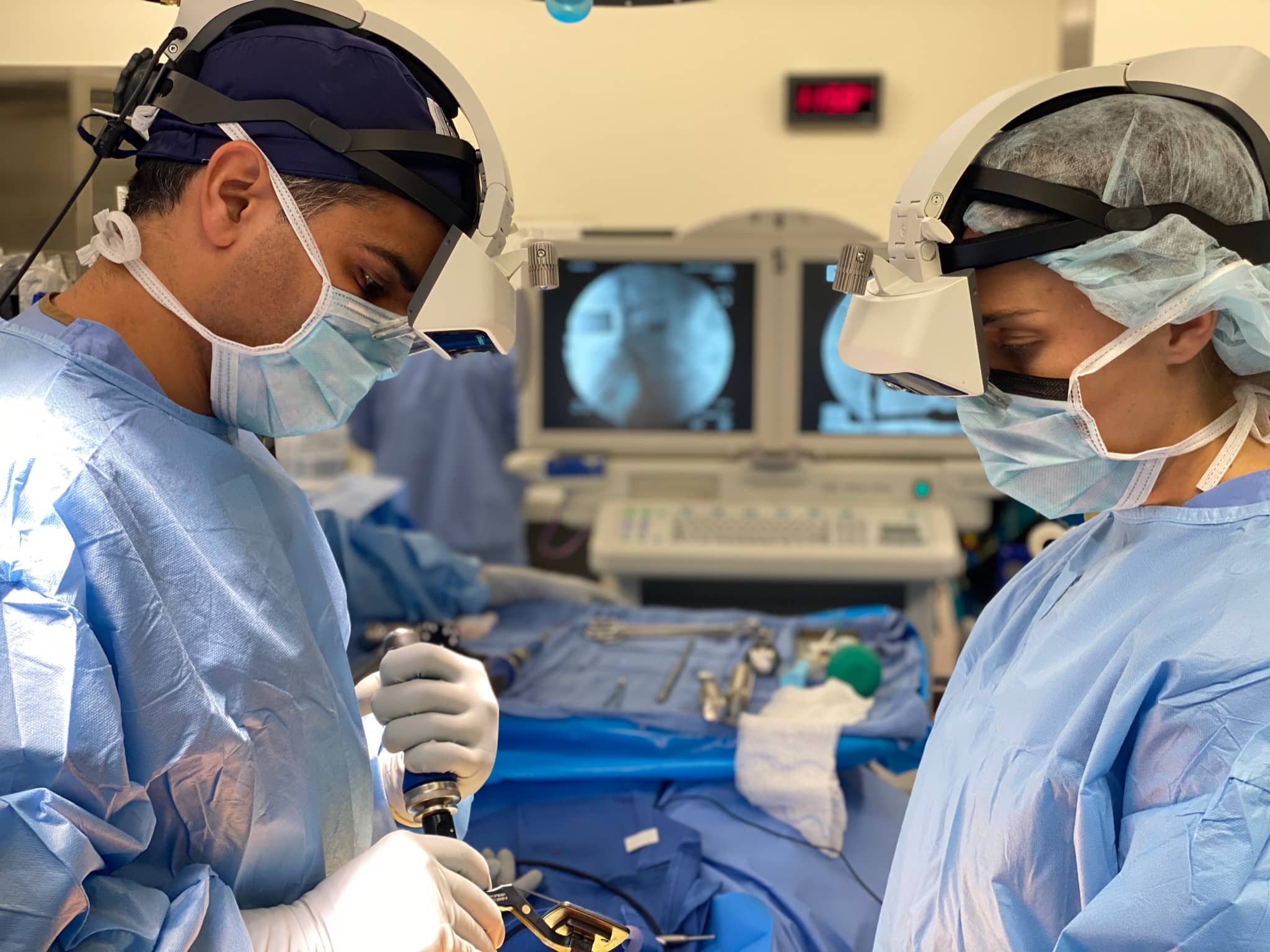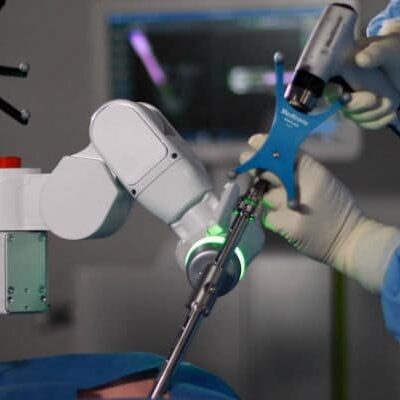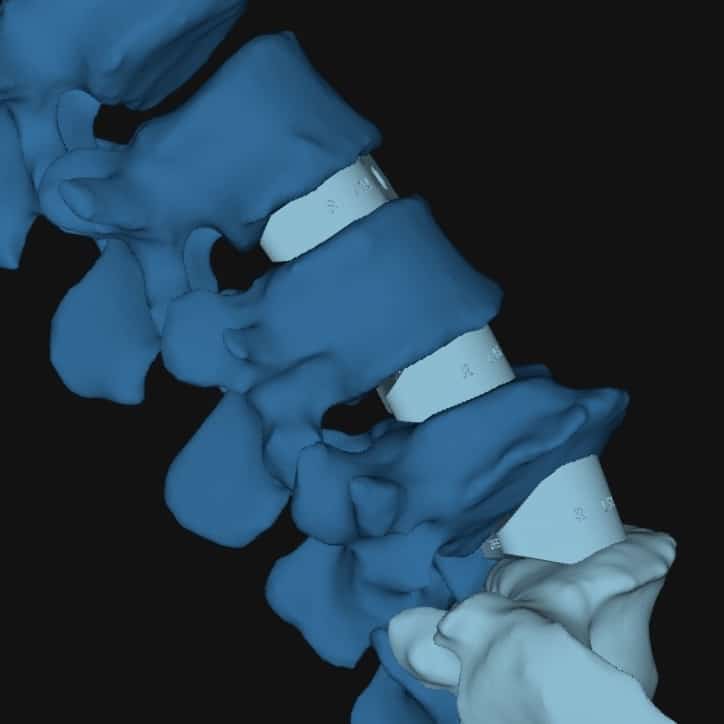Surgical Technology
The future of spine surgery is now
Maximum Results with Surgical Technology
Technology in spine surgery is a game changer for millions of patients suffering from neck or back conditions. These advancements allow VSI surgeons the ability to perform less invasive surgical procedures with smaller incisions, less operative bleeding, faster recovery time and shorter hospital stays.

Augmented Reality (AR)
As one of the first spine teams in the world to implement augmented reality into surgery, our surgeons are pioneering ways to make surgery safer and less invasive for our patients. This groundbreaking technology allows our surgeons to visualize a patient’s 3D spinal anatomy during surgery — almost like they have ‘x-ray vision.’ With this tool, surgeries are less invasive and allow patients to recover faster than traditional surgery.
Robotic-Guided Spine Surgery
Patients come to VSI to receive care from the pioneers in robotic-guided spine surgery.
This innovative technology creates a smarter operating room by planning and creating a blueprint for each surgery. Our surgeons perform the procedure in its entirety with guidance from the computerized 3D planning system that pinpoints each next step. The benefits of using this state-of-the-art technology have not only been proven in patient outcomes, but also through the research we have performed.


3D Printing Technology
Drawing inspiration from industries like aerospace and automobile, which use 3D printing technology to fabricate custom parts, VSI is leading the field of spine surgery in progressively incorporating this transformative approach to revolutionize spine surgery.
The creation of a personalized implant begins with detailed imaging of the patient’s spine through a CT scan and X-Ray imaging. Proprietary algorithms are then used to generate a personalized surgical plan and implant designs. Once the plan is approved by the surgeon, the implants are 3D printed, sterile packaged, and delivered to the hospital in advance of the surgery.
This remarkable surgical achievement marks a momentous leap forward in global spine surgery, aiming to offer patients the personalized care they truly deserve for the future. VSI remains at the forefront of medical advancements, embracing state-of-the-art technologies to reshape the landscape of spine care worldwide.
Discover the Benefits of Surgical Technology
Using advanced technology in spine surgery has many advantages that lead to a faster recovery time, ultimately returning patients to their active lifestyles faster.
- Improved surgical accuracy
- Smaller incisions
- Less risk for surgical complications
- Less radiation exposure during surgery
- Shorter hospital stays and recovery

